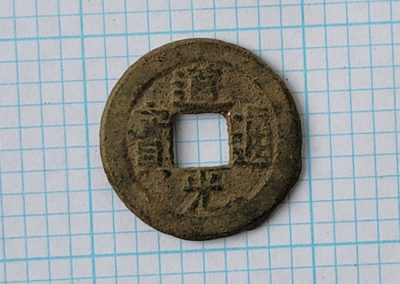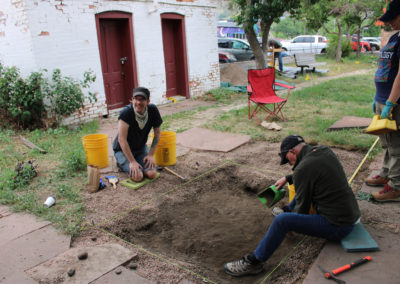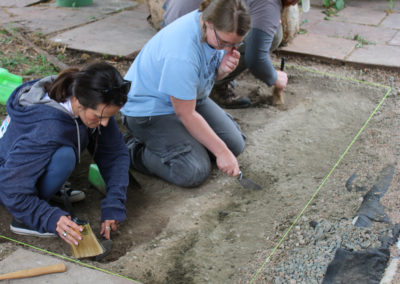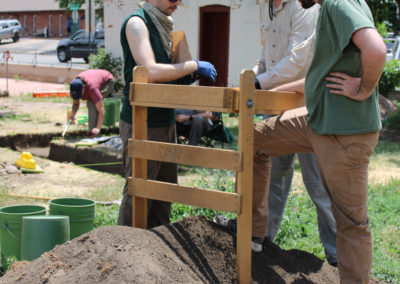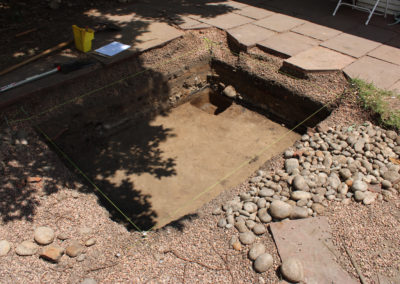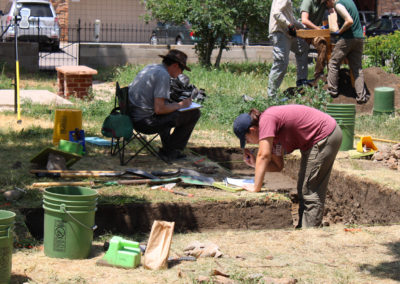From the hotel for dignitaries to stay in during their visit to Golden, Colorado, to a boarding house for university students, the historic Astor House is beginning its transformation into a public arts hub for the community.
Metcalf has teamed up with groups such as Colorado School of Mines, Foothills Art Center, and more to restore Astor House. Public tours of the archaeological excavations led by Community Connections LLC engaged the community and educated them on the history of the Astor House and the future plans for the historic property. This amazing collaboration gives professionals, students, and even citizens the opportunity to be involved in their community’s history.
History of Astor House
Astor House, originally named Lake House after the owner, Seth Lake, was built in 1867 when the city of Golden was the capital of Colorado. Built with local materials, the building is one of the oldest hotels in the Rockies. While Lake wanted the building to serve dignitaries, it also aided ill and down-and-out visitors. Over the years, the hotel has gone by names like ‘Hotel Boston’, ‘Castle Rock House’, and finally, the Astor House, named after the infamous Astor House hotel in New York.
Astor House Today
The building turned vacant after some time, to where it became a parking garage in the 70s! Citizens of Golden came together to save the building and turn it into a public museum. Additionally, they made it a local landmark, even adding it to the National Register of Historic Places in 1972. In 2015, the building was one of Golden’s last unrestored historic downtown properties. With many organizations coming together, the Astor House will come alive again to tell the story of Golden, Colorado’s past for today’s community, while investing in the future.
Metcalf and Astor House
The Astor House project involved Metcalf Archaeological Consultants to ensure the restoration is respectfully done with its history in mind. Since Metcalf has started on the project, the following items have been uncovered:
- 19th Century Chinese coin minted during the Qing dynasty
- A Grand Army of the Republic fraternal order pin, showing dates from 1860 to 1866
- A Union Nickel minted in 1867
- Pieces of ceramic, likely from dishes used in the boarding house
- Bone related to hotel kitchen/ meat market that preceded the boarding house in early 1860s
There is an extremely high probability of other buried artifacts in the area. All artifacts found will be on display. Metcalf will help delicately preserve anything of significance.
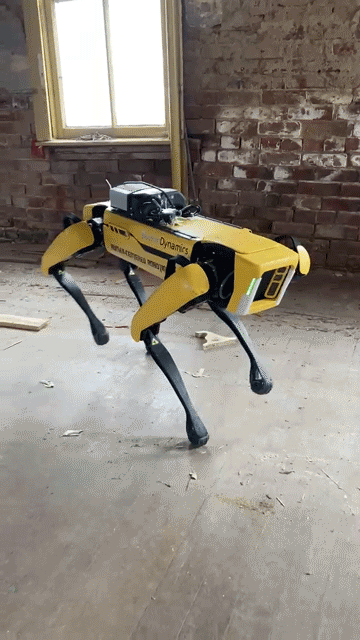
“Astor” the Dog
What do Astor House and dogs have in common? Our friends at Colorado School of Mines brought a friend to help with preservation efforts. A dog friend… well… a robot dog friend. “Astor” the Robot Dog came to Astor House to scan the interior of the building. This will create 3D models over time as they bring the property back to life through extensive adaptive reuse.
Boston Dynamics designed “Astor” to explore remote and possibly hazardous environments, so its human friends can safely collect data. The quadruped robot can climb stairs and explore rough terrain through remote operation or even autonomous sensing. “Astor” can travel at a lightning speed of 3.5 miles per hour with 360° range of vision. The Robot Dog is even dustproof and waterproof.
Thanks to the generosity of Colorado School of Mines, “Astor” can do the tedious job of scanning and taking thousands of pictures while humans can continue restoring and preserving Astor House safely.
Augmented Reality and Astor House?
In addition, Metcalf has partnered with the Foothills Art Center and Factor Earth to create an augmented reality (AR) experience for the public. The interactive and immersive application allows users to explore the Astor House, Golden, and other areas of significant meaning through the free, publicly accessible platform.
Check out the adventure and start earning rewards with local businesses!
The Explore app is best experienced on a mobile device.

Going Forward and the Astor House of Tomorrow
Restoring an important city landmark is a community effort. Without the engagement, care, and contribution of the public, Astor House would have become a parking garage. An important part of Golden’s history would have been lost. By staying involved and informed with local events and history, we can work together to preserve the past for future generations. Who knows, maybe a robot dog will stop for a visit.

